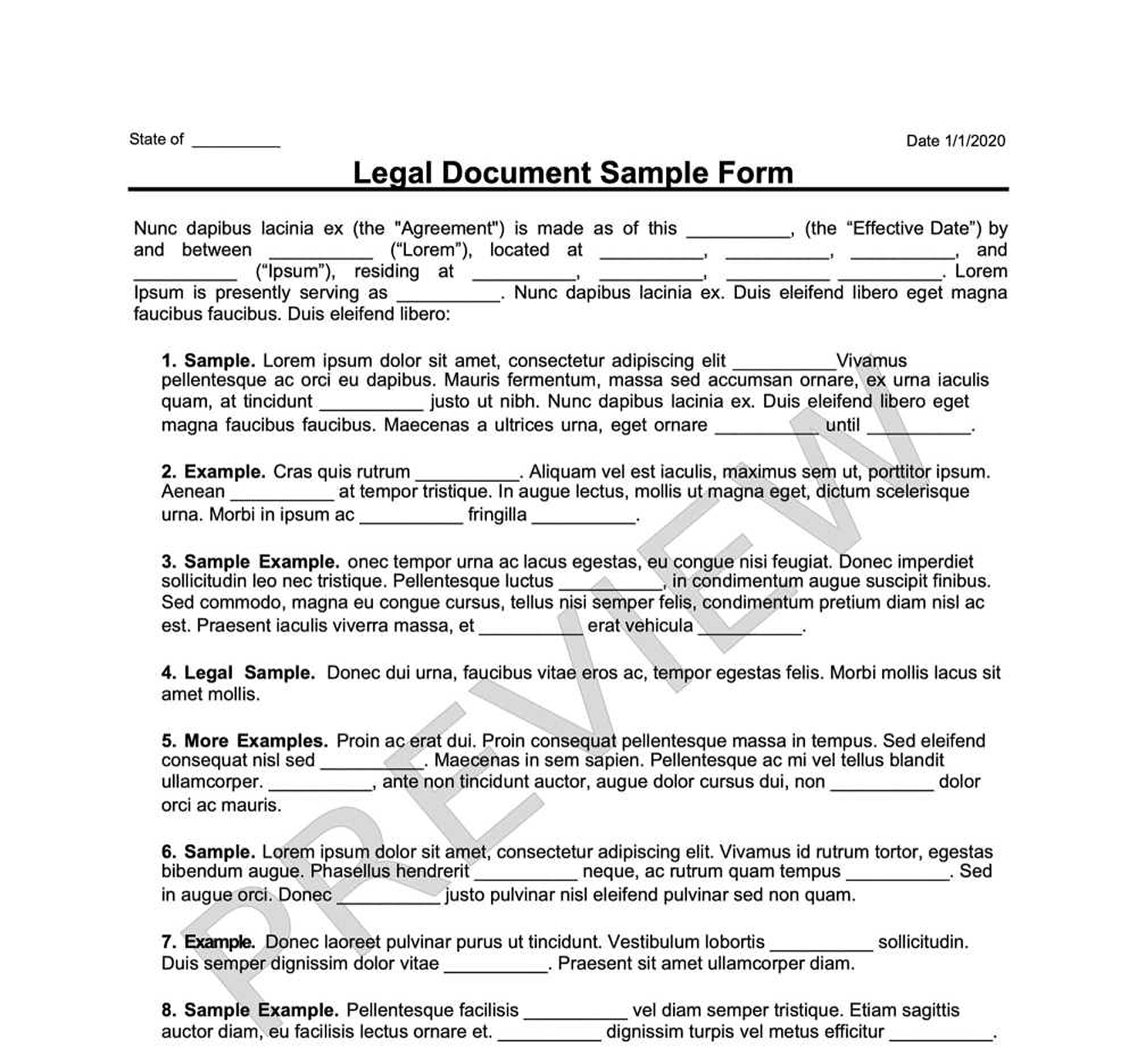Living Trust Schedule of Assets
A Living Trust Schedule of Assets is a document used to keep track of assets you wish to distribute to specific beneficiaries after your death.

How it Works
Build your selected document.
Answer a few simple questions with step-by-step instructions.
Print & download forms instantly. Sign & make it legal.
What Is a Living Trust Schedule of Assets?
A common misconception is that the ownership rights to your assets automatically transfer to your loved ones intact after you pass. Your wealth can be significantly taxed and reduced after death, whether in real estate, bonds, personal items, or other assets.
There are various ways to ensure your loved ones or others you might want as beneficiaries don’t lose too much. While most people opt to leave a will, setting up a trust is often a better option, especially if you have significant assets.
What Is a Living Trust Schedule of Assets?
To understand a Living Trust Schedule of Assets document, you must first understand the idea of a living trust. You create this trust while you’re alive to transfer assets to beneficiaries without going through probate.
Therefore, the Living Trust Schedule of Assets lists assets owned by the living trust. You can think of it as a checklist for your assets, how you funded each one, and how others should distribute them post-mortem.
Other Names for Living Trust Schedule of Assets
Depending on your state, you may also know a Living Trust Schedule of Assets as a:
- Trust Schedule
- Inventory of Trust Property
- Property Inventory
Who Needs a Living Trust Schedule of Assets?
A Living Trust Schedule of Assets can benefit anyone with assets they want to transfer ownership of after they die. It can also serve as a means to reduce gift and estate taxes.
You may use a Living Trust Schedule of Assets to transfer property, money, and other assets to specific trustees on precise dates after your death. In addition, you can use this document to retain your privacy and avoid having your assets disclosed as a matter of public record.
Furthermore, you can use it to maximize the monetary gain of trustees by avoiding probate and its associated costs.
You can also use it to name your children as beneficiaries of a life insurance policy instead of a spouse. Lastly, if you have issues with creditors, a Living Trust Schedule of Assets can set up a transfer of ownership that may limit what creditors can do after you pass.
Why Use Swyft Forms for Your Living Trust Schedule of Assets
Customized for you, by you
Create your own documents by answering our easy-to-understand questionnaires to get exactly what you need out of your Living Trust Schedule of Assets.
Specific to Your Jurisdiction
Laws vary by location. Each document on Swyft Forms is customized for your state.
How to Create a Living Trust Schedule of Assets With Swyft Forms
The legal field around living trusts is quite complex. Ensuring you set up your Living Trust Schedule of Assets correctly for maximum protection and privacy can be challenging to manage independently. It’s best to ask for expert help instead of making mistakes and losing your assets.
Let Swyft Forms help with our extensive library of attorney-vetted legal forms. The process is fast and easy. All you have to do is fill out our easy-to-understand questionnaire. Once complete, simply download your form as a PDF or Word document from your secure online account.
What Information Will I Need to Create My Living Trust Schedule of Assets?
To create your Living Trust Schedule of Assets, please provide:
- Living Trust Information: Provide information about the trust handling the asset inventory, including name, type, and other relevant details.
- Asset List: Create a list of all assets you wish to transfer over to the trust to redistribute after passing.
- Pour-Over Will: This is an optional step but can be helpful if you somehow forget to transfer certain assets to your trust.
- Beneficiaries: List the beneficiaries and their corresponding assets.
Every Living Trust Schedule of Assets is unique and may require supervision when drafted. However, there is no specific or formal template that you need to follow.
Living Trust Schedule of Assets Terms
- Trust: A legally empowered entity that can hold assets for beneficiaries until they can distribute them
- Living Trust: A legal entity that holds assets prior to one’s death before distributing them to beneficiaries
- Beneficiary: Entities that stand to receive certain assets according to the conditions set in a trust
Living Trust Schedule of Assets Signing Requirements
Since this isn’t a legal document, it doesn’t have to be signed by a witness or notarized by a notary public.
What to Do With Your Living Trust Schedule of Assets
The Living Trust Schedule of Assets isn’t a legal document, and you don’t have to file it with certain authorities. However, you should still make multiple copies and share them with your beneficiaries, lawyer, and trustee.
With Swyft Forms, you’ll receive this document in multiple formats and be able to protect and share it however you deem appropriate.
Other Names for Living Trust Schedule of Assets
- Living Trust Schedule of Assets Form
- Living Trust Schedule of Assets Document
- Living Trust Schedule of Assets Agreement
- Living Trust Schedule of Assets Contract
- Living Trust Schedule of Assets Template
- Living Trust Schedule of Assets Checklist
Who Needs a Living Trust Schedule of Assets?
Why Use Swyft Forms for Your Living Trust Schedule of Assets
Customized for you, by you
Specific to Your Jurisdiction
Why choose Swyft Forms?
Create professional documents for thousands of purposes.
Make unlimited documents and revisions.
Our documents are vetted by lawyers and are applicable to all 50 states.
